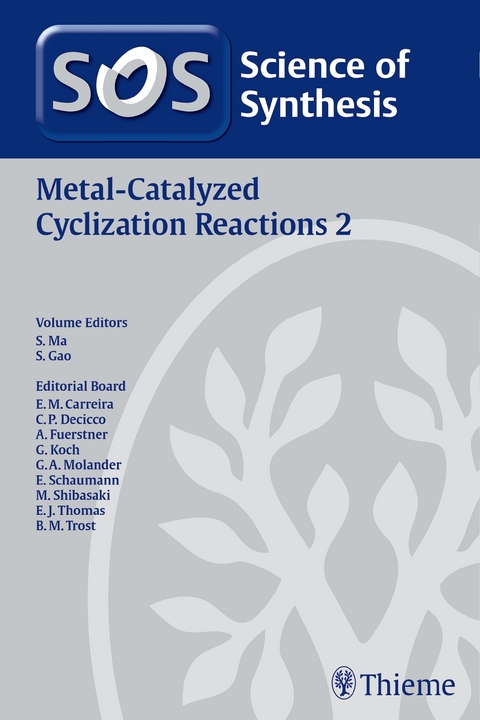Science of Synthesis: Metal-Catalyzed Cyclization Reactions Vol. 2
Seiten
lt;p>Significant advances in metal-catalyzed reactions, especially cyclizations, have dramatically improved the efficiency of organic synthesis over the last three decades. To date these transformations are widely used in the area of synthesis of both natural products and therapeutic agents. Science of Synthesis: Metal-Catalyzed Cyclization Reactions presents the most commonly used and significant metal-catalyzed reactions for modern organic synthesis. The basic principles, the current state of the art, scope, limitations, and mechanism of these reactions are also discussed. Typical examples of target synthesis are provided to help inspire further applications.
Volume 2 covers epoxidations, aziridinations, cyclopropanations, and Pauson-Khand reactions, as well as a wide range of cycloaddition processes, radical cyclizations, and ring-closing metathesis.
Shengming Ma is Professor of Chemistry at the Department of Chemistry, East China Normal University and the Director of State Key Laboratory of Organometallic Chemistry, Shanghai Institute of Organic Chemistry (SIOC). After obtaining his Ph.D. from SIOC, he spent some time with Professors Venanzi (ETH Zurich, Switzerland) and Negishi (Purdue University, Indiana, USA) as a post-doctoral fellow and returned to China as a faculty member of SIOC in 1997.
| Erscheinungsdatum | 15.06.2016 |
|---|---|
| Reihe/Serie | Science of Synthesis |
| Verlagsort | Stuttgart |
| Sprache | englisch |
| Maße | 170 x 255 mm |
| Gewicht | 1511 g |
| Themenwelt | Naturwissenschaften ► Chemie ► Organische Chemie |
| Schlagworte | Chemie • chemistry synthetic methods • cyclizations • metal-catalyzed reactions • organic method • organic reaction • Organisch-chemische Synthese • Organische Chemie • Organische Chemie; Handbuch/Lehrbuch • Synthese • synthetic transformation |
| ISBN-10 | 3-13-199811-3 / 3131998113 |
| ISBN-13 | 978-3-13-199811-8 / 9783131998118 |
| Zustand | Neuware |
| Haben Sie eine Frage zum Produkt? |
Mehr entdecken
aus dem Bereich
aus dem Bereich




